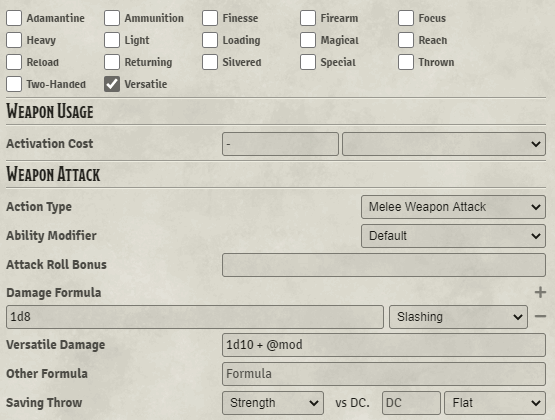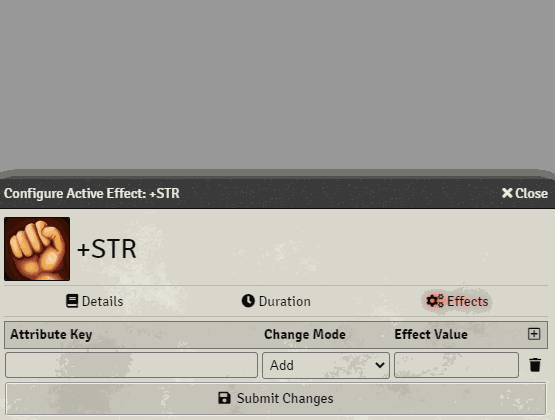Autocomplete Inline Properties
This module adds an autocompletion and hint UI for sheet fields that can accept inline properties or other document data
references, for instance a damage field referencing an ability modifier (e.g. @abilities.dex.mod), or an
ActiveEffect key (e.g. data.bonuses.mwak.attack).


Usage
There are two ways to invoke the AIP interface: By pressing the @ key in a field for which AIP is enabled, or by
clicking on the floating @ button in the UI.
Both actions will open the AIP interface, which consists of a text box with the data path entered so far and a list of data keys at the current data path. As you type, matching keys will be underlined, and the first key matching the currently entered path will be faintly highlighted, indicating it is currently selected. You can adjust the selected key by using the up and down arrow keys.
Pressing Tab will insert the currently selected key into the path text box, and you can continue from there.
Pressing Enter, or clicking on the insert button to the right of the path text box will send the currently selected
key to the underlying field in the sheet.
Module and system authors can enable or disable the option to press the @ hotkey, or the floating @ button on a
per-field basis.
Compatibility
This module currently offers built in support for the following systems:
- dnd5e
- pf1
- sw5e
- ds4
Development
Pull requests to support additional systems are more than welcome!
Systems and modules can also add support for their sheets on their own side by inject corresponding configuration into
the AIP configuration using the aipSetup hook event. See CONTRIBUTING.md for a guide on how to add
support for your system or module.
Prerequisites
In order to build this module, recent versions of node and npm are required. Most likely using yarn also works but
only npm is officially supported. We recommend using the latest lts version of node. You also need to install the
project's dependencies. To do so, run
npm installBuilding
You can build the project by running
npm run buildAlternatively, you can run
npm run watchto watch for changes and automatically build as necessary.
Linking the built project to Foundry VTT
In order to provide a fluent development experience, it is recommended to link the built project to your local Foundry
VTT installation's data folder. In order to do so, first add a file called foundryconfig.json to the project root with
the following content:
{
"dataPath": "<path to your home directory>/.local/share/FoundryVTT"
}On platforms other than Linux you need to adjust the path accordingly.
Then run
npm run link-packageLicense
Licensed under the MIT License (see LICENSE).




